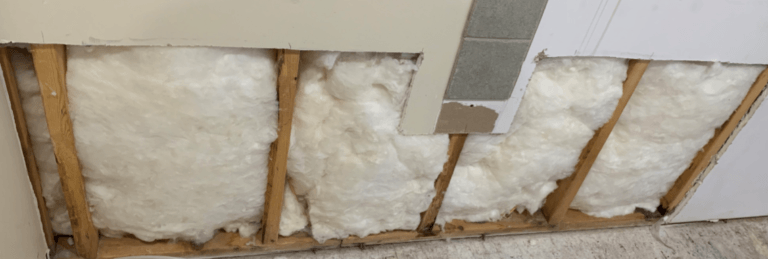Top Tips for Mastering Drywall Taper
In the world of drywall installation, mastering the art of tapering is equivalent to a fine artist knowing the strokes of their brush. My journey into drywall tapering began with a project that seemed deceptively simple—a small remodel in my cousin’s home. I arrived with just the basics, but as soon as I began, I realized the importance of precision, technique, and the right tools. Stripped of confidence and fighting my way through wrinkled seams and inconsistent surfaces, I learned firsthand the value of honing my tapering skills.
Fast forward to now, years later, and I strive to guide professionals and DIY enthusiasts alike on the path to drywall tapering mastery. Here are the top tips to elevate your tapering game:
1. Start with Quality Tools
Whether you’re a seasoned professional or a novice, the right tools can make a monumental difference in your tapering experience. Level5 Tools offers a variety of top-notch drywall tools that can streamline the tapering process, making it easier and more efficient. For instance:
- Automatic Taper: This tool can significantly reduce the effort needed for taping and finishing, allowing you to achieve a flawless result faster than manual methods.
- Taping Knives: These are essential for smooth application; a high-quality knife helps to spread mud evenly and prevent unwanted ridges.
Tip: Always ensure your tools are clean and in optimal condition. Regular maintenance goes a long way in achieving better results.
2. Master the Mud Application Technique
One of the most critical aspects of drywall tapering is the application of joint compound (mud). Here’s an effective method to get it right:
- Stir It Up: Always mix the joint compound thoroughly before starting. A creamy consistency helps it spread more easily rather than clumping.
- Texture Control: Use a flat pan to hold your compound, ensuring it’s easy to load onto your knife. The Level5 Mud Pan features a wide opening for easy access and cleaning.
- First Coat: Apply a thin layer to cover the seams and allow it to dry fully. Aim for a 12-inch feathering edge to minimize finishing effort later.
2.1 Use the Right Taping Tools
The right tools can greatly impact your joint compound application technique. Consider investing in:
- Taping Tool Sets: These comprehensive sets offer everything you need for both taping and finishing.
- Corner Rollers: They assist in applying the compound smoothly to corners, ensuring a professional look.
3. Understand the Drying Process
Allowing your joint compound to dry between coats may seem tedious, but it’s essential for achieving a professional finish. Factors affecting drying times include humidity, temperature, and air circulation. Remember:
- Cool and Dry Conditions: Ideal for faster drying.
- High Humidity: Slower drying times, which could warrant consideration of additional fans or heaters.
Tip: Always allow adequate drying time between coats; rushing this step leads to cracks and uneven surfaces.
4. Perfect Your Tapering Technique
Tapering requires a balance of pressure and precision. Consider these tips to perfect your technique:
- Body Position: Maintain a stance that is comfortable. Lean slightly toward the wall, this helps provide control as you move your knife.
- Pressure Management: Apply even pressure throughout your stroke. Too much pressure can lead to mud being removed rather than applied.
5. The Importance of Finishing
Finishing is what takes your tapering to the next level. Here’s how to ensure a flawless finish:
- Use the Right Tools: For the final coat, employ skimming blades and sharpened trowels.
- Feathering Technique: Feather the edges of each coat to diminish the lines where the compound meets the drywall.
- Sanding: Once your final coat dries, sand it using a fine-grit sandpaper for a smooth finish. Pay attention to edges and corners which often need a lighter touch.
6. Practice Makes Perfect
The journey to becoming a master taper is ongoing. The more you practice, the better you’ll become. Offer to help out on jobs, or take on small projects at home to hone your skills.
6.1 Keep Learning
Expand your knowledge by utilizing resources available online. Check out articles such as The Best Drywall Taping Techniques and Drywall Skimming Tips for a Flawless Finish to refine your skills further.
7. Employ the Right Technique for Texturing
If you’re adding texture to your walls, understand the different methods available:
- Spray Texturing: Adds dimension to walls and ceilings.
- Hand Troweling: For a more controlled texture application.
8. Be Prepared with the Right Accessories
Lastly, don’t forget the little things that can make big differences in your workflow:
- Compound Tubes: For precision application, these tubes can save time and reduce mess.
- Corner Finishers: Ensure that tight corners receive the attention they deserve without over-applying compound.
Conclusion: Your Journey Begins
There you have it! With these actionable tips and the right tools from Level5, you’ll be well on your way to mastering drywall tapering. The road to excellence is paved with practice and the use of high-quality materials that can aid your efforts.
Have you mastered your drywall tapering techniques, or do you have any questions about the tools you need? Feel free to share your experiences or ask for advice in the comments below!
For more insights, check out How to Repair Drywall Like a Pro for your next project!
Happy tapering!


